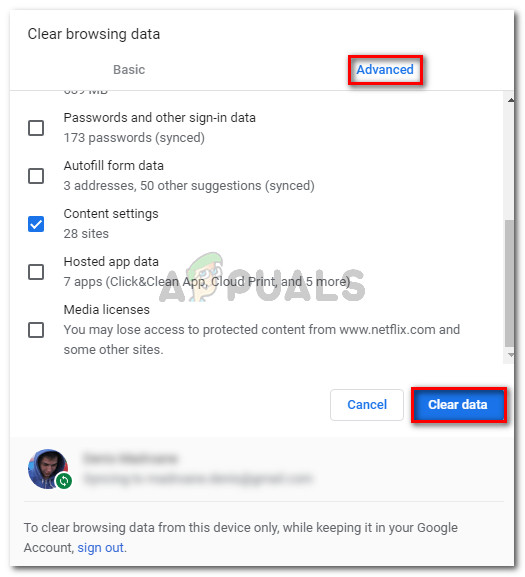How to Fix Netflix Error F7702-1003?
Some Windows users are encountering the ‘F7702-1003’ error code when attempting to stream content from their PC. In some cases, the error code is accompanied by the message ‘The plugin has crashed’.
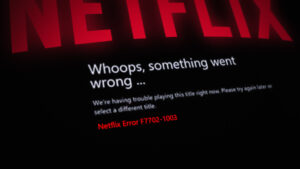
After investigating this particular issue, there are several different potential causes with the potential of causing this particular issue. Here’s a list of culprits that might be responsible for the apparition of this error code:
- Outdated browser – If you see this error while attempting to stream content from Netflix, chances are you’re using an outdated browser version that is being rejected by the streaming service. In this case, you can fix the issue by installing the latest version available.
- Glitched Firefox DRM module – An outdated or corrupted DRM (Digital Rights Management) component can also be responsible for this sort of issue with Netflix. If this scenario is applicable, you should be able to resolve the issue by reinstalling the Content Decryption Module from the Options menu of Firefox.
- Corrupted Netflix cookie – According to some affected users, this issue can also occur due to some kind of corrupted cached data. This might prevent your browser to bridge the connection with the Netflix server. If this scenario is applicable, you can fix the issue by clearing every Netflix cookie.
Method 1: Update browser to the latest version (if applicable)
As it turns out, you can also expect to see this particular error code if you’re attempting to stream content from Netflix from a severely outdated browser version that determines the streaming service to refuse the connection.
Affected users are reporting that this issue is occurring on both Firefox and Google Chrome.
If you find yourself in this scenario, the first thing you can do is follow a series of steps that will update your browser build to the latest before attempting to stream content again.
Depending on which browser you’re using, follow sub-guide A or sub-guide B to ensure that you’re using the latest version of the browser of your choice.
A. Update Mozilla Firefox
- Start by opening up Mozilla Firefox, then click on the action button in the top-right corner of the screen.
- From the action menu of your browser, go ahead and click on the Help tab to bring up the context menu, then click on the About Firefox entry.

Accessing the About Firefox tab - Once you are inside the About Mozilla Firefox menu, click on the Restart button if a new version is available.
- Wait patiently until the operation to complete, then click Yes at the User Account Control (UAC) to grant admin access.
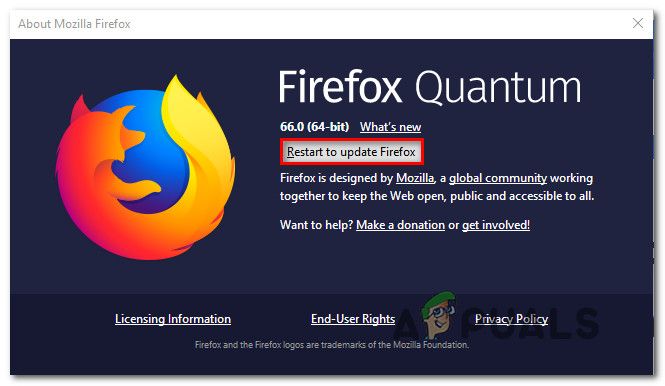
Update Firefox to the latest version - Once your browser is updated, restart Mozilla Firefox and see if the problem is resolved.
B. Update Google Chrome
- Start by opening Google Chrome and clicking on the action button (top-right corner of the screen).
- Inside the action context menu, click on the Help submenu then click on About Google Chrome from the list of available options.
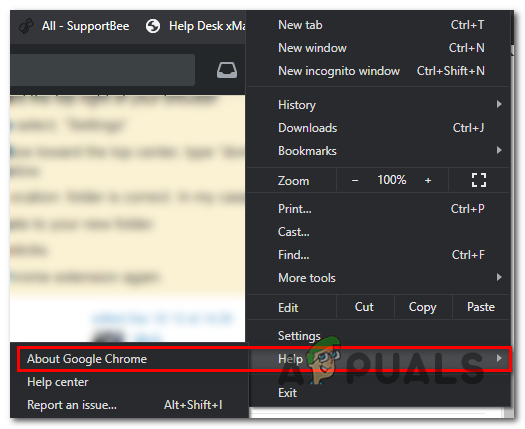
Accessing the Above Google Chrome menu - After you’re finally inside the About Google tab, your browser should automatically download and install the latest version if available.
- In case a new version is found, it will automatically replace the current (outdated version). Once the installation is complete, reboot your computer and see if the ‘F7702-1003’ error is fixed.
In case this problem is still not fixed, move down to the next potential fix below.
Method 2: Reinstalling the Firefox DRM
If you’re using Firefox, you can also expect to see the ‘F7702-1003’ error due to an outdated or corrupted DRM (Digital Rights Management) component that is no longer being accepted by Firefox.
Firefox’s DRM component works differently from Chrome, and it turns out that it’s way more prone to break than Google’s browser.
If you’re encountering this issue while attempting to stream Netflix content from Firefox, you might be able to fix the issue by reinstalling the Firefox CDM (Content Decryption Module) following the official channels.
If this scenario is applicable, follow the instructions below to reinstall the DRM module used by Netflix by reinstalling the Firefox CDM module:
- Open Firefox and click on the main action button in the top-right corner of the screen, then click on Options from the list of available options.
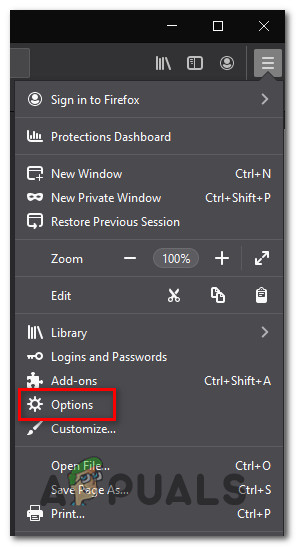
Accessing the Options menu on Firefox - Once you’re inside the Settings menu of Firefox, click on General from the menu on the left, then scroll down through the list of different categories and uncheck the box associated with Play DRM-controlled content.
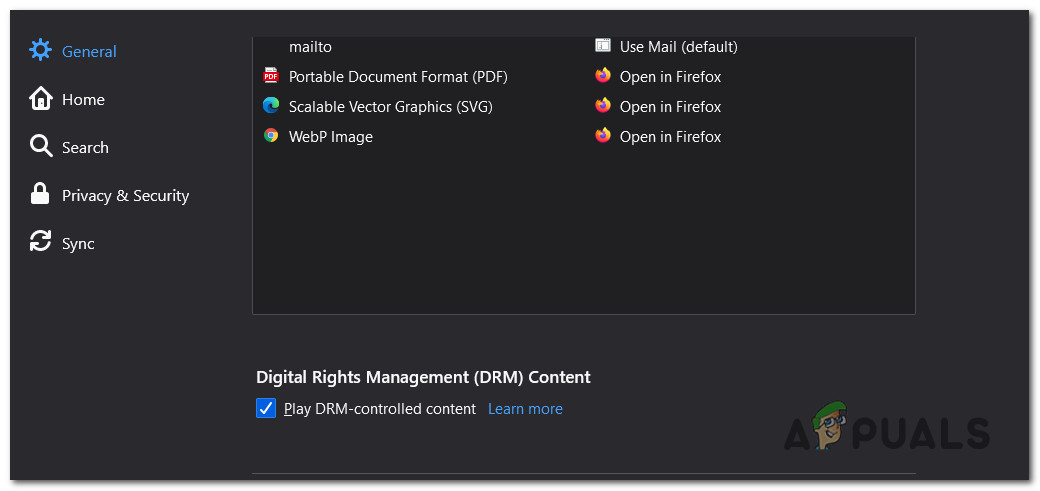
Temporarily disabling DRM Content - Once the box associated with Play DRM Content is disabled, then click on the same action button (top-right) section of the screen, then click on Add-ons from the context menu that just appeared.
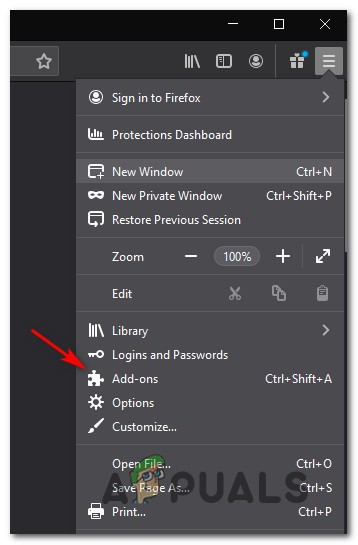
Accessing the Add-ons menu - Inside the Addons menu of firefox, click on Plugins from the menu on the left, then wait until the section labeled Primetime Content Decryption Module stops displaying on the menu on the right-hand side.
- Once the Primetime Content Decryption Module stops displaying, restart firefox and resume streaming on Netflix again and see if the problem is now fixed.
If you still end up seeing the same ‘F7702-1003’ error even after following the instructions above, move down to the next potential fix below.
Method 3: Cleaning the Netflix Cookies
As it turns out, another reason why you can expect to see this error is a scenario in which some kind of corrupted cached data is preventing your Windows computer from connecting to the Netflix server.
A lot of affected users have reported that they finally managed to fix the ‘F7702-1003’ error by clearing your browser cache and deleting the specific Netflix cookie.
However, the exact operation of doing this will be different depending on which browser you’re using. But to make things easier for you, we’ve compiled a set of instructions that will walk you through the process of clearing the cache of the most popular Windows browsers.
